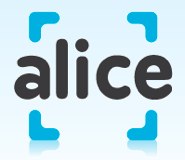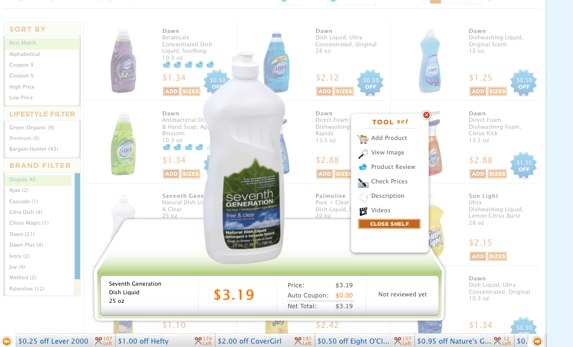
Ever run out of toilet paper or trashbags at an inopportune moment and think to yourself, I wish I had someone to remind me when I need to buy household basics? Tonight at 9 pm, Alice.com will show you a better way to buy household essentials online that will not only remind you when you need more toilet paper but will save you time, and most importantly, money.
The basic idea behind Alice.com, which raised $4.3 million in funding last fall, is that the site is an open platform for consumer packaged goods manufacturers, like Procter & Gamble, to sell directly to consumers instead of going through retail channels like Target or Wal-Mart. On the consumer side, Alice.com lets users create a profile of their household (how many people, kids etc.) and then the site will keep track of items and reminds users with emails when they are running low and need to reorder. Each shipment is bundled together in a single ‘Alice’ box, delivered directly to the consumer’s door, with no shipping costs attached.
Although young, the site, which has over 6,000 products, has a great deal of variety when it comes to different types of products. There are 86 choices under bathroom paper, which includes kleenex, toilet paper, cotton balls and more. And there are 804 offerings for hair products. You can choose to shop for goods by type of room (kitchen, bathroom, bedroom), brand, green/natural products, or by the best deals. You can also filter results by lifestyle choice (green, bargain hunter, premium), by brand, or by those that have coupons. Alice also crawls the web for coupon codes (often discounts offered by the manufacturers themselves) and will automatically apply discounts to products on the site.

I did a comparison of a bottle of Tide liquid laundry detergent on Alice.com and Drugstore.com. On Alice.com, the price was $7.71 with discounts, nearly $6 cheaper than the price on Drugstore.com, which was $13.99. The other nifty tool that Alice provides is a built in comparison shopping feature for each item, that will look up comparable prices on competitors including Drugstore.com, Safeway, Walgreens, CVS and Amazon Fresh.
Of course, you pay your state’s tax on the item and you have to buy at least six items at a time, which can be annoying if you run out of certain items at different rates. But Alice saves your information so when you return to the site, it will calculate what you need and suggest items for you. You will also be able to choose free samples to add to your shipments from manufacturers. You can also review products on the site but you have to have purchased an item in order to submit a review. And you can publish your list to the site, if you want others to see what you’ve bought (which might not be that interesting considering all lists will be composed of household items). And to keep up with budget conscious users, Alice.com will chart your spending history over your orders.

On the manufacturer side, Alice.com makes no retail margin allowing each manufacturer to control product assortment and pricing in its own direct sale to the end consumer. Alice collects the goods from the manufacturers in a warehouse and manages all of the e-commerce and shipping. So how does the site make money? Advertising. Alice.com collects money from manufacturers which post ads on the site and also offers alternative ways to advertise via free samples and coupons. It should be interesting to see if advertising alone is a viable business model for Alice.
Alice.com could have the recipe for success for a startup-a solid idea, competitive pricing and experience. Co-founders and serial entrepreneur can get Brian Wiegand and Mark McGuire managed to sell three companies in the past +10 years, most recently flipping social shopping service Jellyfish to Microsoft (which it later used to create Live Search Cashback).
Wiegand and McGuire both said that manufacturers are excited at the idea of selling directly to the consumer via Alice.com. Wiegand cited one reason that I found interesting: the emergence of retail stores providing their own labels for household goods. For example, Target has created their own brands of dishwasher soap, which competes directly with Dawn, Palmolive and others and is often priced at lower pricepoints. Wiegand says that manufacturers find this frustrating, especially when retailers advertise their cheaper brands next to the manufacturers more expensive brand.
Competitors of course range from online retailers like Drugstore.com to Target, Walmart, Lowe’s, and even grocery stores. But with Alice’s prices and convenience, the startup has the potential to make significant strides in in the space.